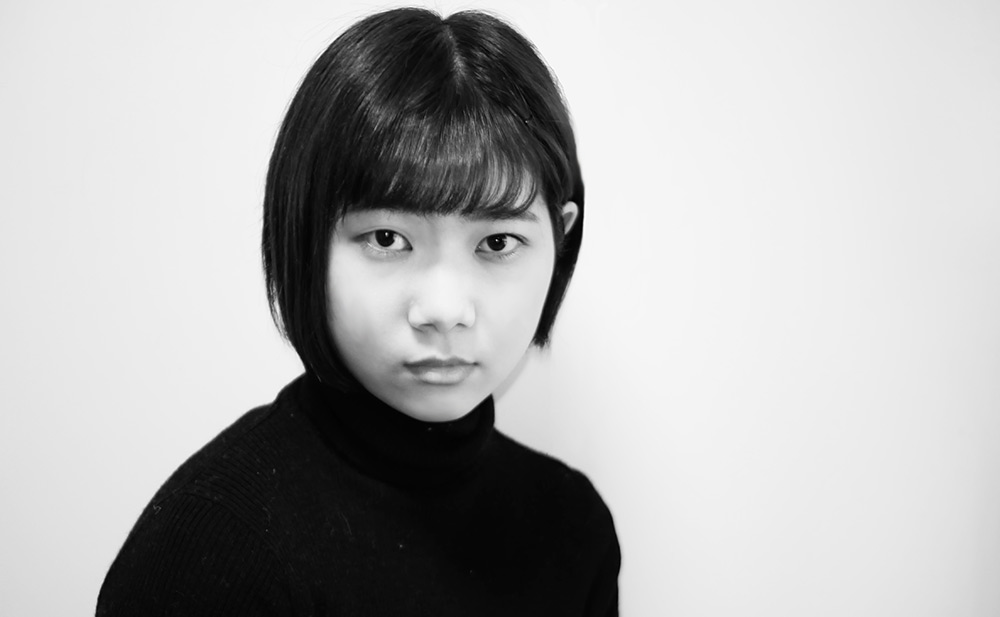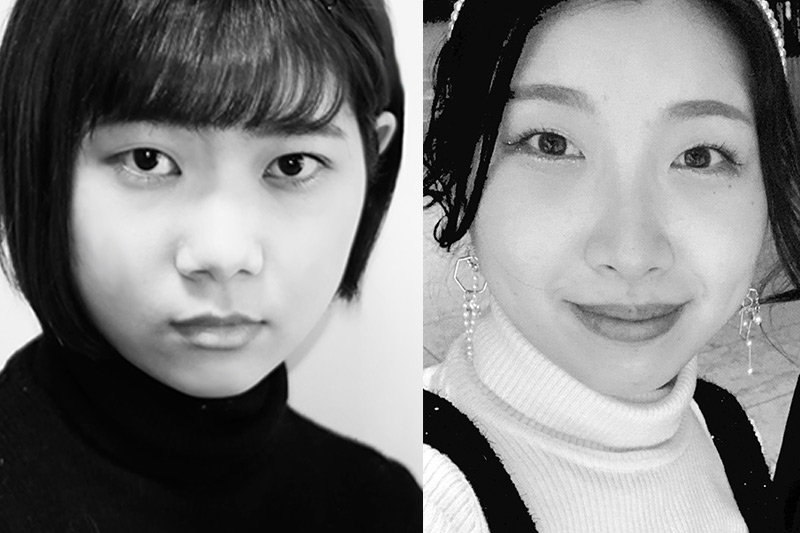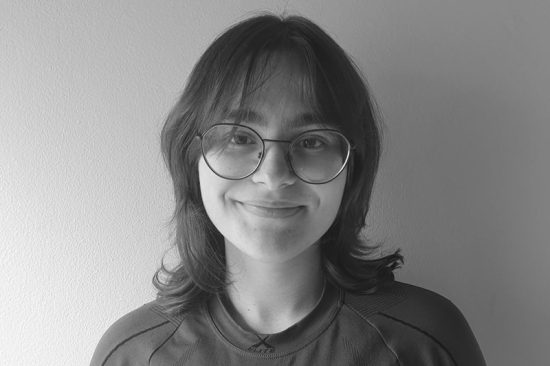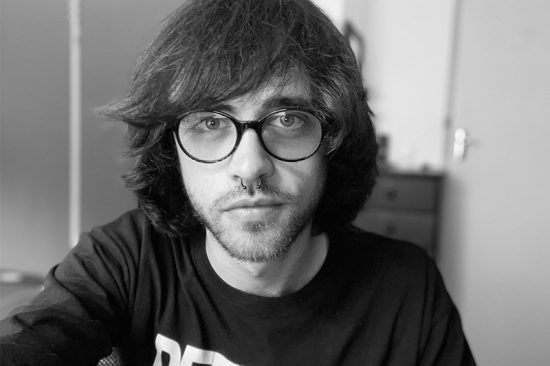
Now, she is researching new methods of expressing letters as shapes. Ayaha describes her work, In Your Hands, in the context of our current world as “a moment where hands are objects of both fear and fascination”. We spoke with her about the growing social significance of her 2020 winning project..
Hands as Social Objects.
TPP45S Thank you for giving us the opportunity to learn more about In Your Hands! May I ask how you discovered the Phaistos Project and what your first reaction was upon first discovering the Phaistos Disc?
AYAHA KATO I discovered the project through a University class! It intrigued me because we use a lot of emoji to represent emotions, objects, and complex ideas in today’s world, and it’s a big surprise that this sort of symbolism already existed more than 3000 years ago. The Disc is not deciphered, but I was also surprised that some motifs are recognizable even today. In a similar way, I wonder how the emojis we use will be perceived in the future, thousands of years from now.
TPP45S How do you think the significance of hands and touching has changed since the onset of COVID-19?
AYAHA KATO There are many taboo aspects of even interacting with another person nowadays. We may have lost our ability to communicate through touch without even realizing it. Now that functioning without being in-person is common, we have adapted to communicate as long as we have a network. However, there are many people, including myself, who feel that this mode of communication is unsatisfactory. For example, even if you meet a friend for the first time in a long time, there is a cloth or plastic barrier between you and them. If this situation continues for too long, I don’t know if we will be content to hold hands and say, “It’s wonderful to touch!” after COVID-19. Separately, we may still choose to rely on networks and machines. COVID-19 has created a major turning point that will change our lives and culture. Of course, it is important to accept a new lifestyle that suits society. But that’s why I think it’s necessary to reaffirm that we have hands and live with them, even if their meaning has changed.

TPP45S Your project involves many interweaved lines which come together to create an unmistakable image of hands in movement. Although they are so simple, they are so expressive: demonstrating movement, vivacity and intimacy with the human form. What was your process behind configuring the 45 images?
AYAHA KATO The first problem I had was finding out from everyday scenes where 45 hands were used. Since the movements of the hands are always unconscious, it was difficult to capture them. Actually, in the previous version, the hand was drawn more faithfully, but it looked like an illustration, and there was no sense of their unity as a symbol. Then I started the challenge of how much I could simplify my hands. With using the minimum amount of lines, I expressed the fingers and their movements, and the boundaries between hands. As a result, I think that each symbol has an imaginary margin. In other words, it is not an easy-to-understand hand, but you can actively imagine what kind of movement they are making.
TPP45S Your Artist’s Statement speaks of how the project invites other people to look at their own hands differently. For example, “Smartphone”, which is a brilliant illustration, is a recognition of recent societal change, while “Pray” is a hand gesture we have been familiar with for a very long time. Do you have a favorite image that highlights something essentially human?
AYAHA KATO I like “Pen”, actually! I really like the act of writing by hand. Humans are the only animals that communicate using writing—it is one of the peculiarities of human beings to convey information by writing letters. Nowadays, I often type letters on my smartphone or computer, but I still carry a notebook and pen for taking notes. In retrospect, I realize many of my memories are on paper and are left behind by letters and pictures. For example, letters I wrote when I couldn’t write well and began to cry—or the colorful pictures complimented by my parents—are my treasures! Handwritten characters take time and often cannot be written perfectly, but it is very interesting that each person has their own personality and the impression changes greatly with a slight difference. In a digital format, you may be holding a smartphone pen and sliding the pen tip onto the screen instead of paper. Even if now, new technology overflows around me and the medium changes, I feel like I’m holding a pen, and I think that will continue.
TPP45S As a designer, how do you think the practice of design has the ability to change the world we live in and move towards a better future?
AYAHA KATO I think there is an opportunity for design to change the world, especially to move us toward a better future. I think small, everyday awareness and ideas can change our emotions, and in this way design can make our lives better. Design isn’t just for designers, though. If everyone works to improve their daily lives and the world, the world would have a brighter future, I think. It’s necessary to think positively about how to change without pessimism. I feel that we are beginning to accept a design of change that is well adapted to the times.

The Wonder of the Ordinary.
TPP45S Thank you for speaking about your project! Frozen Lives especially forces us to reflect on the state of living during the COVID-19 pandemic. Before we delve into that, could you let us know how you find the Phaistos Project, and what your first reaction to the Phaistos Disc was?
CHISAKI YUKI Thank you. Yes, I found the Phaistos project through an advertisement in a college class. I found it to be reminiscent of Letter Formation, a class which I had studied earlier. I felt these symbols, some concrete and some abstract, were very much open to interpretation in the same way that the characters of an English alphabet or Chinese characters might be when taken out of context.
TPP45S That is true. In a way, each ice image you captured with the microscope will be change in meaning for each viewer. Was this intentional, and how do you think it contributes to the larger theme of the project?
CHISAKI YUKI Yes, it was intentional. Because it’s important to always deconstruct everything that exists around us, I chose an object common in every households as I enjoy finding the wonder in things that often go overlooked. I think that my image of ice, are just like so many other objects that are universal in our society, and can be interpreted to represent many different things to many different people. This allows the viewer to take a sort of mental adventure inside an otherwise ordinary object.

TPP45S Could you talk a little bit about your process, and how this idea came about?
CHISAKI YUKI As an artist, I enjoy interpreting abstract things in an individual way. I want to share the joy of re-interpretation with people who may not see the world through that lens and make that mode of thinking accessible to them. I also hope that people will see not just the whimsy in this but also the vital importance of always examining the world around them. The ice acts as one of the triggers for others to be thinking about a myriad of things in their societies.
TPP45S The ice is so fleeting, since it changes shape every moment, yet it was able to be captured in photograph. How do you think the significance of time passing in daily life, especially during the time of COVID-19, has changed?
CHISAKI YUKI Now, in the era of COVID-19, we have a narrower range in which we can live and act on a daily basis. I think we have to live each moment more carefully. Personally, I have grown more acquainted with the fragility of time, which was difficult to feel before the age of COVID-19. Images in the ice appeared and disappeared so quickly.
TPP45S It is a wonderful metaphor through which to feel the fleetingness of time and you captured it brilliantly. One final question—as a designer, how do you think the practice of design has the ability to change the world we live in and move towards a better future?
CHISAKI YUKI I believe that design has the power to stimulate our senses as well as completely change the way we think. Changing the way things are made can inspire everyone to think more freely as well as help others interpret and apply novel ideas for the betterment of the world we live in.
TPP45S Thank you, Ayaha and Chisaki, for taking the time to describe your process and help us gain insight to this wonderful creation.

Ayaha Kato
Ayaha Kato was born in Kyoto in 1998. In university, Kato studied graphic design. Now, she is researching new methods of expressing letters as shapes.
Winning Project Open Call 2020: In Your Hands

Chisaki Yuki
Chisaki Yuki was born in Osaka, Japan. She got her start as a painter at Doshisha Women’s College of Liberal Arts before studying design there. Her work is concerned with finding beauty in everyday objects.



